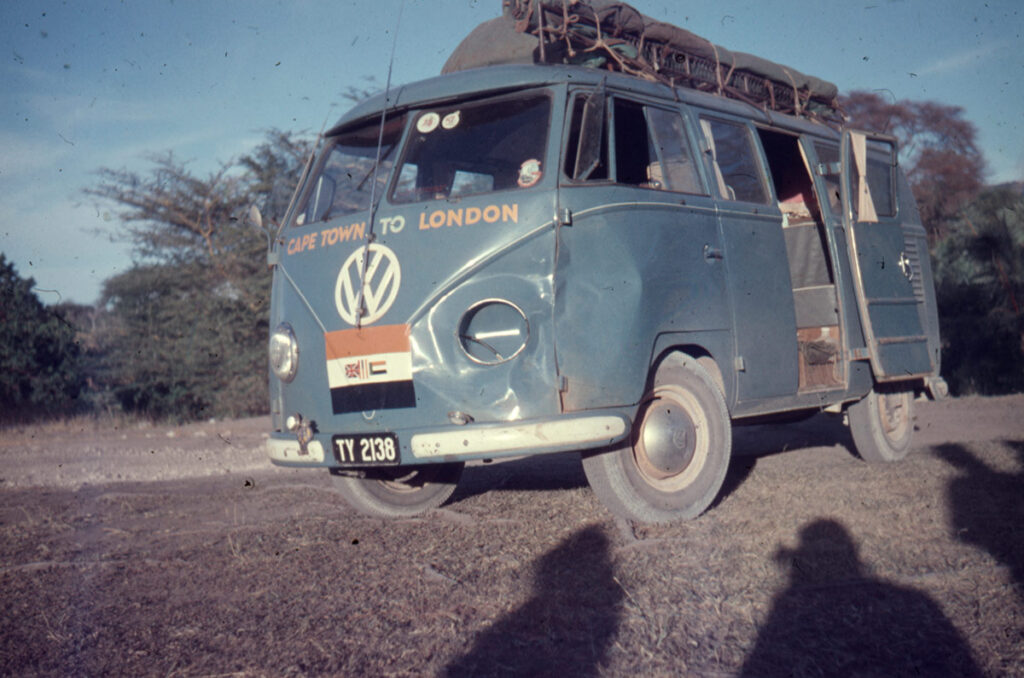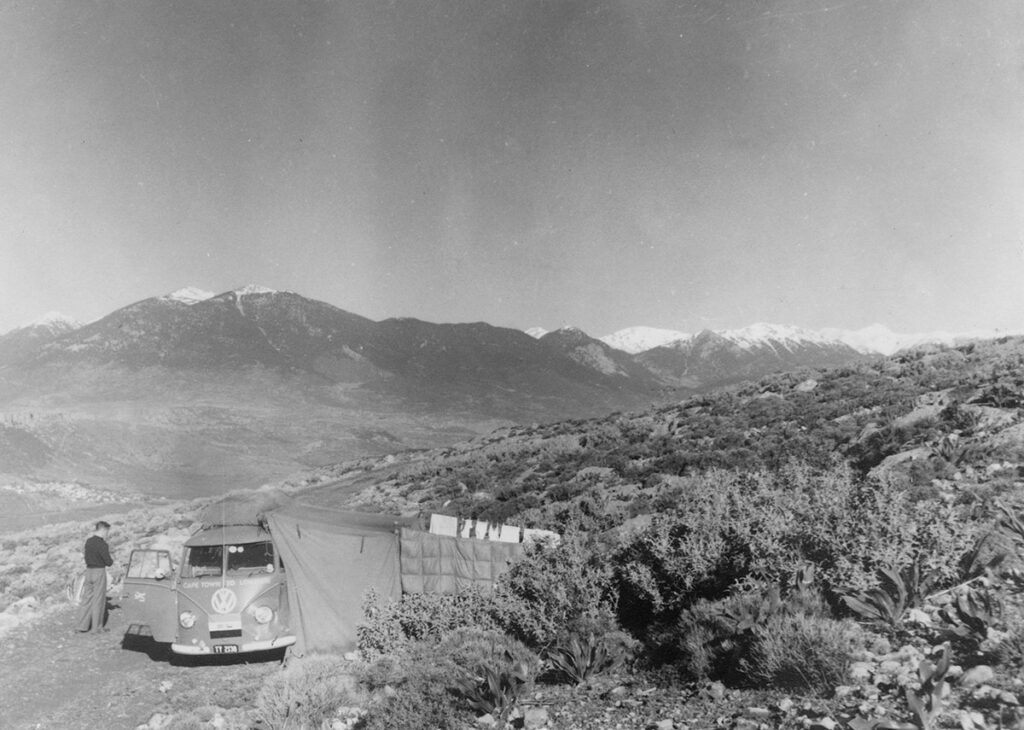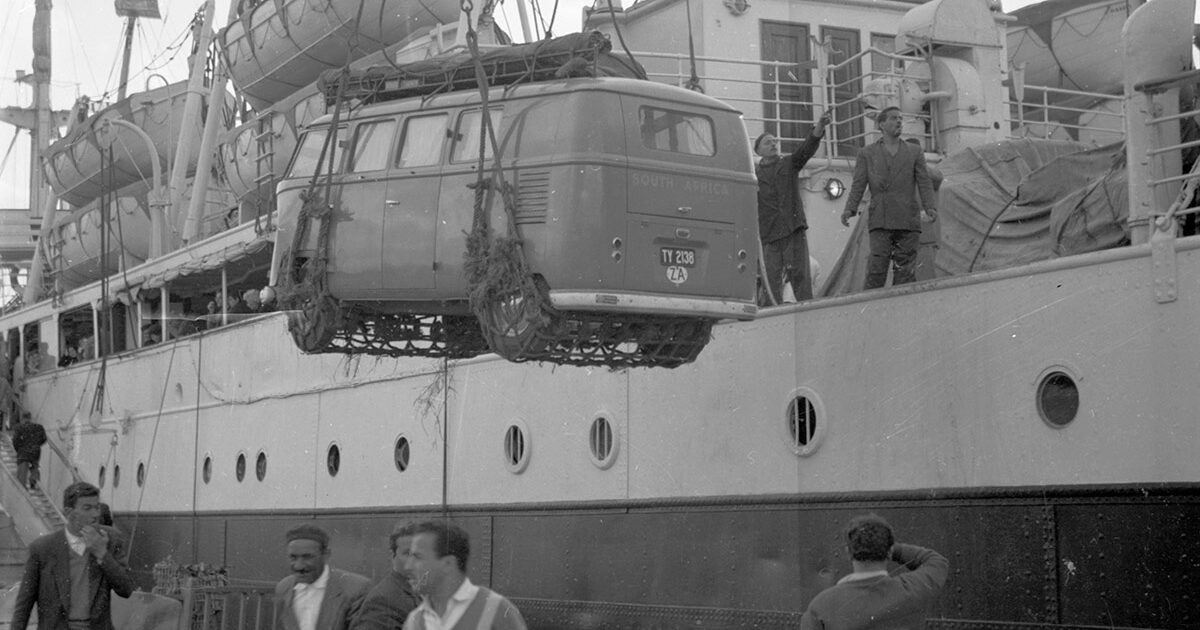In 1958, three brothers and two ladies embarked on a road trip of a lifetime in a standard VW Kombi. Travelling for four months, they started in Cape Town, crossed Africa and Europe, and finished in London. It was a foolhardy undertaking but their pioneering spirit, raw tenacity, (and finding a soul mate) saw them overcome all obstacles …
Like most epic endeavours, this trip started off as a crazy idea. Having done a previous trans-Africa trip with a small Renault and discontent with his job at the time, Carel Marais, a young civil engineer working in Klerksdorp, South Africa, started talking to his two brothers, Johan and Marius, about doing a second trip through Africa and Europe to England to explore job opportunities in London.
As fate would have it, Joan Povall, a girl Carel met some time before, came to visit, and soon the Marais brothers convinced Joan and her friend, Audrey Nives, to join them on their outrageous quest. To accommodate five people, Carel bought a second hand 1954 VW Kombi T1 “Splittie” with 1 300 miles on it for £600.
The Kombi, with a manual gearbox and a 1.2litre fourcylinder “boxer” engine delivering 22 kW, had no 4×4 capability (no diff-lock, low or high range gears), no power steering, no air-con, no extra ground clearance, and no low-range fuel tanks. It was kitted out with a roof rack, a foldaway mattress bed, a radio, and a canvas tent attached to the roof rack.
Pre-planning for the trip was minimal – it consisted a telegram and five letters between Carel and Joan – and additional equipment included four spare tubed tyres with extra tubes, patches, and glue, some vehicle spares such as a clutch cable, around 20 litres of water and 20 litres of extra petrol, paraffin for the stove, block and tackle, rope, a waterproof ground sheet, a mosquito net, basic medical supplies, citronella oil, a compass and … a 1956 edition of the Trans-African highways book.

Epic African adventure
The party of five left Cape Town on 29 December 1957 and after crossing the border at Beit Bridge, they travelled through Zimbabwe, Zambia, Malawi, Tanzania, and Kenia towards Ethiopia and Sudan. In places, the so-called Great Northern Road was non-existent, and besides spending hours to repair punctures, the Kombi got stuck numerous times and had to be towed out using manpower, horses, block and tackle, and spades…
In the Tsavo National Game Park in Kenia the VW got rammed by a protective mother rhino, damaging one headlight and front door (it no longer worked for the remainder of the trip) but no one was injured. Along the way, they collected mail from South African or British embassies, and the diplomats would take them briefly under their wing.
Normally, the men would sleep in the lean-to tent on the ground while the two girls slept in the Kombi but sometimes, during a heavy thunderstorm, a torrential downpour, or high wind conditions everyone would end up in the vehicle … When the party reached Sudan, the eldest brother, Johan, decided to part with the group and return to South Africa to marry his sweetheart.
Then, on entering Egypt, Audrey (who travelled on a British passport) was denied passage and this meant she had to fly from Sudan to Greece to wait for the company as they drove through Egypt. While in Luxor, Carel and Joan secretly got engaged (they were not a couple when they started the trip) and then Carel got arrested while they were camping next to the Suez Canal …
He was taken to a military camp for interrogation (he was accused of being a spy, due to the tense political climate in Egypt after the Suez Crisis) but luckily, the matter ended amicably. Then, still in Egypt, Joan hit a pedestrian and he had to be hospitalised. The whole party was placed under police escort and had to attend a court hearing the next day to testify that it was an accident. Luckily, the pedestrian lived.
The Kombi was ferried from Alexandria in Egypt to Greece and from Athens the party continued their journey northwards through the erstwhile Yugoslavia. By now the vehicle was adorned by artwork, courtesy of Audrey (a trained graphic artist), and the Zulu name **Ikhaya eli hambayo** (mobile home). The intrepid crew crossed Italy and France, the Kombi was ferried to Britain over the English Channel, and they reached Trafalgar Square in London on 28 April 1958 – 120 days after the start of their ludicrous journey, covering over 21 700 km.

Home is a Journey
After the trip, the trusty Kombi was shipped back to South Africa and sold in Cape Town in September 1959 for £450. Amazingly, the total cost per person for the trip was just over £120! On 26 July 1958, seven months after the start of their incredible journey, Carel and Joan married in London. They later returned to South Africa to start a family.
While Joan never wrote a book about the journey, she was a prolific letter writer and after her passing in 2018, her daughter Louise (who currently lives in Perth, Australia) put together the stories, the photographs, and the diary of the trip to share their inspirational adventure in book form.
The soon-to-be-published book, titled 1958: Home is a Journey, is the daily diary account by 26yearold Joan as she describes her maiden voyage, recounting the numerous challenges facing overland travellers in an era long ago.
In her foreword, Louise writes: “Whatever your tolerance for challenge is, I hope you can find the remarkable in these ordinary, everyday writings and see what extraordinary individuals these were who saw adventure where other saw danger or hardship. Life is simply a journey of comfort and discomfort, best tackled with a sense of adventure.”
Text: Ferdi de Vos | Images: Louise Slater (nee Marais) personal collection


